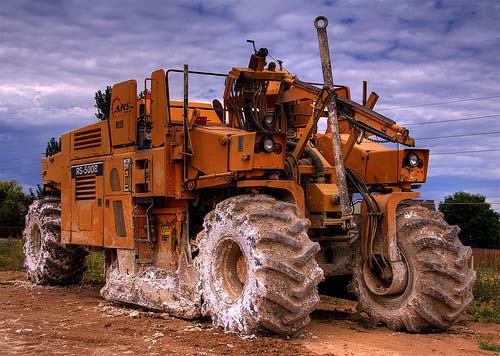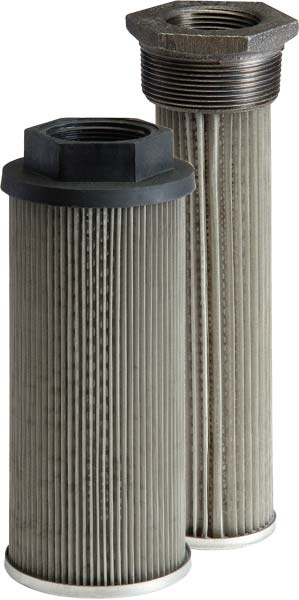If there is too fine of filtration on the inlet line, the pump could possibly cavitate, leading to components being damaged or destroyed. For that reason, it is important to have a by-pass valve on your inlet strainer. That will take care of any possibility of cavitating the pump.
Another reason for using a bypass is during cold weather start-ups. Using a bypass will allow unfiltered fluid to bypass the strainer and continue through the system until its viscosity reaches standard operating temperature. Allowing unfiltered fluid to temporarily bypass the strainer can be more cost effective than possibly collapsing the strainer or destroying a pump due to cavitation. However, I cannot stress enough how important regular system maintenance is to maintain clean fluid running smoothly through the pump.
The second location a filter should be placed is in the pressure line following the pump and before the actuation, the component that is actually performing the function. If a directional valve is used, install the filter before the directional valve. The actuation performs the work of the system and has the greatest need for the finest filtration. Pumps produce wear and debris. If you have a servo system, the micron rating on this filter should be 3 microns or finer. At this stage of the system you want to insure the filter is as fine as the application requires. The question is not, “How clean does the fluid have to be?” The question is, “How dirty can the fluid be to still get the job done and still give you good system life?” In a “typical” hydraulic system, if there is such a thing, a 5-10 micron cellulose paper or glass filter is adequate.
We merely touched the surface with the first two areas where a filtration device should be installed. Stay tuned for the 3rd and 4th areas.
 Cross Reference Guide
Cross Reference Guide
 Cross Reference Guide
Cross Reference Guide

 Last time we mentioned how the reservoir could be considered a filter itself. Now let’s take a look at the first two locations in the hydraulic system where some sort of filtration should be installed.
Last time we mentioned how the reservoir could be considered a filter itself. Now let’s take a look at the first two locations in the hydraulic system where some sort of filtration should be installed.